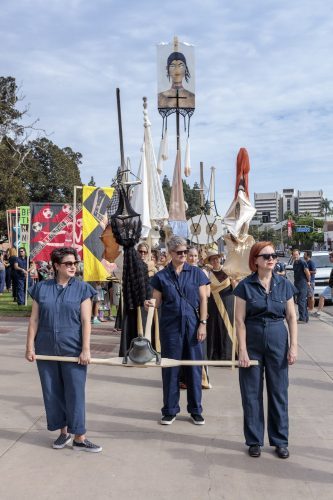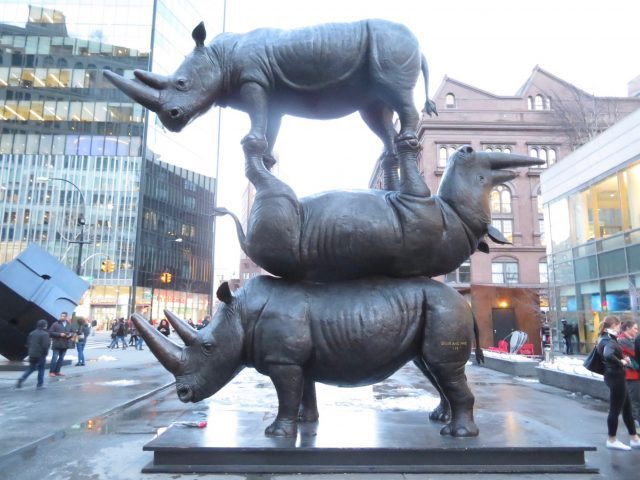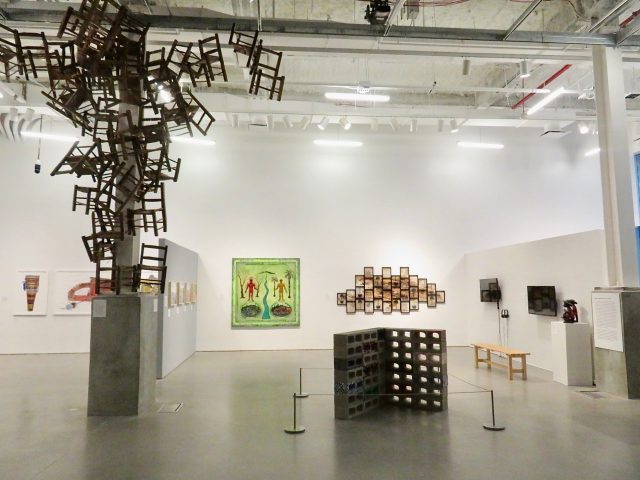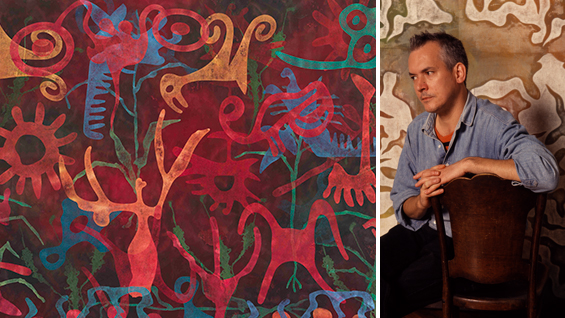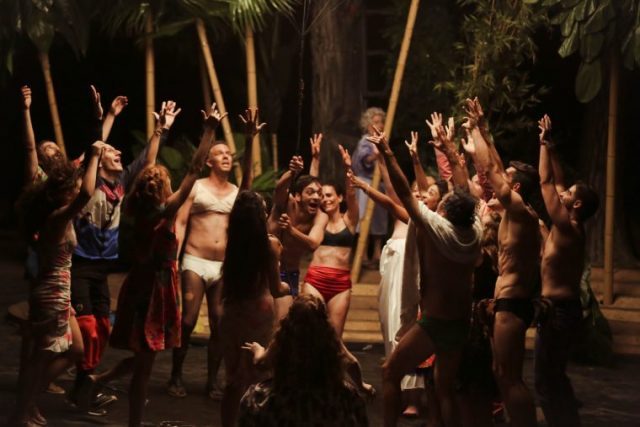
American premiere of Nikos Karathanos’s The Birds is a highlight of Greek arts festival in New York (photo by Kiki Papadopoulou)
St. Anns Warehouse, Metrograph, New-York Historical Society, Brooklyn Museum
Through June 16
onassisusa.org
In a classic Odd Couple episode, Oscar and Felix finally get on the same wavelength while on the game show Password when Oscar gives the clue “Aristophanes” and Felix responds, “Ridiculous!” However, there’s nothing particularly ridiculous about “Birds: A Festival Inspired by Aristophanes,” more than a month of film screenings, art exhibitions, panel discussions, a theatrical adaptation of Aristophanes’s The Birds, and more, produced by the Onassis Cultural Center New York and taking place at numerous locations in Manhattan and Brooklyn. “Democracy was under threat when Aristophanes presented his comedy The Birds as part of the Dionysia festival in Athens in the fifth century BC,” explains festival curator Violaine Huisman in a program note, continuing, “Oligarchy was jeopardizing Athenian democracy, while war and constant legal battles raised havoc among citizens. The festival itself offered a chance for the people of Athens to congregate and revel in equal parts, to address state affairs and be entertained — all together.” Sound familiar? The timing is certainly impeccable. The centerpiece of this third annual Onassis Festival begins tonight with the American premiere of Nikos Karathanos’s inventive adaptation of The Birds, presented by St. Ann’s Warehouse and the Onassis Cultural Centre–Athens. The play runs May 2-13 and is accompanied by the free audio and visual lobby and garden exhibit “Nature of Justice: On the Birds.” There will also be events at the Brooklyn Museum, Metrograph on the Lower East Side, and the New-York Historical Society. Actually, looking at some of the photos from the production of The Birds, it does have a “ridiculous” quality to it, but in a good way. απολαμβάνω!
Wednesday, May 2
through
Sunday, May 13
The Birds, American premiere of Nikos Karathanos’s adaptation of the Aristophanes comedy, in Greek with English supertitles, St. Ann’s Warehouse, Brooklyn Bridge Park, $46-$66
Thursday, May 3
through
Sunday, May 13
“Nature of Justice: On the Birds,” multimedia exhibition, curated by Mari Spirito, with works by Machine Dazzle, Louise Lawler, Sofia Stevi, and Theo Triantafyllidis in conjunction with Nikos Karathanos’s adaptation of The Birds, St. Ann’s Warehouse garden and lobby, Brooklyn Bridge Park, free
Saturday, May 5
Pigeon Toes: Bird Walks, led by Paul Sweet of the American Museum of Natural History, Jane’s Carousel, Empire Fulton Ferry State Park, 1 Water St., free with advance registration, 8:00, 11:30, and 3:30 for adults, 10:00 and 2:00 for children six to twelve with adults

Alfred Hitchcock’s The Birds is part of Greek festival inspired by Aristophanes
Monday, May 7
“Nature of Justice: A Visual Arts Response to The Birds,” panel discussion and audience Q&A with artist Andreas Angelidakis, independent curator Reem Fadda, and Brooklyn Museum director Anne Pasternak, moderated by Onassis Foundation director of culture Afroditi Panagiotakou, free with advance RSVP, 7:00
Thursday, May 10
“Voices on: Post-Show Artist Talk,” with director Nikos Karathanos and members of the cast, moderated by St. Ann’s Warehouse artistic director Susan Feldman, St. Ann’s Warehouse, free with show ticket, 9:30
Saturday, May 12
Meet the Fledglings, family-friendly programs by the Wild Bird Fund in conjunction with the exhibition “Feathers: Fashion and the Fight for Wildlife,” for ages five and up, New-York Historical Society, 170 Central Park West, museum admission plus $5 per child, 2:00 – 4:00
Friday, May 18
through
Sunday, May 20
“Birds,” screenings of films relating to birds, including Ghost Dog: The Way of the Samurai (Jim Jarmusch, 1999), The King and the Mockingbird (Paul Grimault, 1980), Brewster McCloud (Robert Altman, 1970), and The Birds (Alfred Hitchcock, 1963), Metrograph, 7 Ludlow St., $15
Sunday, May 19
Birdheart, by Julian Crouch and Saskia Lane, family-friendly show with puppets, free with museum admission but advance RSVP required, 4:00
Wednesday, May 23
“Talk: David Levine,” performative lecture in conjunction with the opening of the exhibition “David Levine: Some of the People, All of the Time,” Brooklyn Museum, free with advance RSVP, 7:00
Saturday, June 16
Cool Culture Family Festival, with arts & crafts, storytelling, scavenger hunts, concert by Shine & the Moonbeams, and more, Brooklyn Museum, free with museum admission, 12 noon – 4:00 pm

